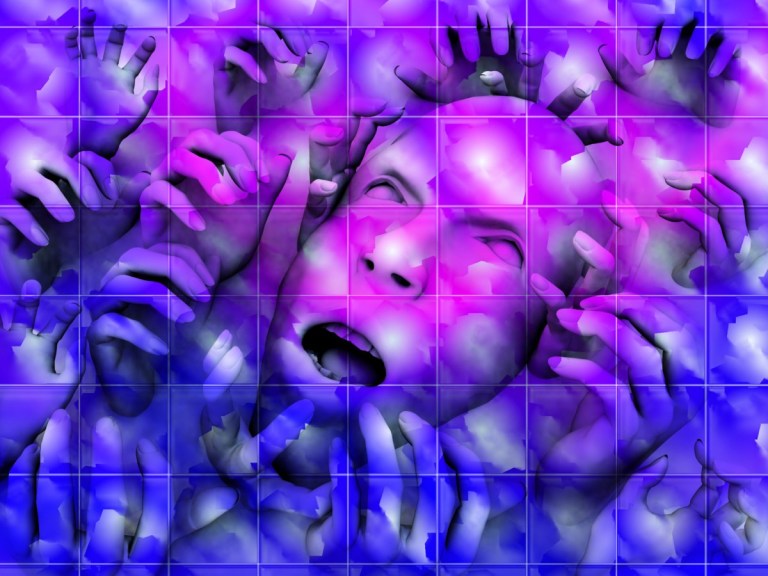Sciatica pain and fibromyalgia often coexist in the same person but may require different treatments and pain management options.
Fibromyalgia itself is known for causing pain in various regions of the body. Many of us living with fibromyalgia may also have secondary diagnoses when symptoms overlap with other conditions. As complex as fibromyalgia is, we don’t want to miss other conditions that may need separate attention.
Sciatica is one of the most common conditions to coexist with fibromyalgia. In this case, one condition doesn’t necessarily cause the other… they can simply exist together, but either way, all fibromyalgia patients should know what sciatica pain is all about.
Pain around the sits bones (piriformis syndrome)
Some people with sciatic pain will often report having pain around the hips, buttocks, and down the legs. It might take some investigating from your attending therapist to find out exactly what you are dealing with.
You may also have piriformis syndrome. This can occur when the piriformis muscles in the buttocks irritate the sciatic nerve. All of the suggestions here and in the other pain articles will apply to both of these syndromes.
Try to be as consistent as possible with very gentle stretches and holds. Never stretch too far or too quickly. I often say that “conventional stretching is not always appropriate with fibromyalgia” Some of these are shown in the hip flexor article.
Sciatica is a medical condition that produces pain along the sciatic nerve. For most people, the pain starts on one side of the buttocks and travels down the back of the leg. In some cases, other symptoms may present in the leg, including:
- Tingling
- Burning
- Numbness
- Weakness
These symptoms may go all the way down to the toes in some people while they are limited to higher portions of the leg in others. The condition is often caused by a slipped disc or another physical condition that causes nerve pain.
When experienced by fibromyalgia sufferers, professionals may not find any physical reason for the pain. The symptoms are the same, but the most common causes don’t seem to be responsible for the pain.
How to Treat Sciatica Pain
Try to take the least invasive approach here. Natural pain control if necessary, consuming foods that contain natural anti-inflammatory components and relieving any aggravating factors like various activities of daily living. Also consider addition of the following treatment options:
- Physical therapy
- Natural Anti-Inflammatory injections (holistic joint doctor)
- Massage therapy
- Acupuncture
- Biofeedback for pain relief
- Boswelia (anti-inflammatory supplement that is a natural cox-2 inhibitor)
It is a good idea to avoid any activity of daily living like bending or cleaning down on the floor if symptoms are present. When there is a slipped disc or another physical explanation for the pain, surgery may be recommended.
Click Here to Visit the Store and find Much More….
For fibromyalgia sufferers who have no clear reason for the pain, this option is not likely to apply. Like with many other forms of fibromyalgia pain, you may be left with pain control, massage, biofeedback, and other Natural Treatments that combat inflammation and pain throughout the entire body.
Sciatica and trigger points
Sciatica can also be activated from long term trigger points around the buttocks or lower back. Trauma or injury to the surrounding areas can cause trigger points in this area to become activated. trigger point areas are not uncommon due to everyday activities like sitting, bending, or weakness.
As I often say, those of us with fibromyalgia can be sensitive to injections given into the body. This area around the buttocks may be very sensitive and can in turn trigger pain around the muscles of the buttocks and lower back. If you have sciatica, you may need to avoid injections around this area.
Additional Natural Treatment Options
You may find that the best treatments for fibromyalgia sciatica pain involve your lifestyle. If you find that the pain is more likely to occur when you sit for long periods of time, invest in a standing desk or a treadmill desk.
It may also help to stick to a weekly fitness routine that includes low to medium impact cardio workouts, energy healing, and strength training specific to fibro people. Visit Fibro Fit People page on Facebook for more support.
As I often say, (and yes, I get it) “we can spend the rest of our lives de-conditioning our bodies, or we can spend the rest of our lives RE-conditioning our bodies” because this is not a race. Consistency is key here. This will help us to better tolerate the ups and downs of fibromyalgia symptoms and fibro flares.
If your back, buttocks, or legs have been hurting more than usual, at least check with a doctor or a specialist familiar with sciatica and fibromyalgia. You may find that your problem is caused by a slipped disc or another problem that possibly has nothing to do with your fibromyalgia. A specialist might help you determine a different cause while creating a treatment plan that relieves some of the pain, stiffness, and overall discomfort.


